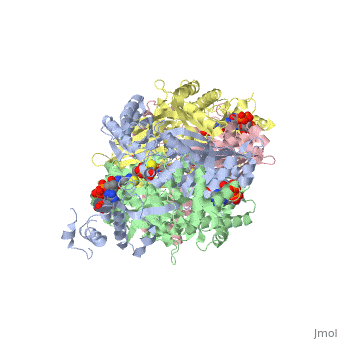Sandbox Reserved 474
From Proteopedia
| |||||||||||
| This Sandbox is Reserved from 13/03/2012, through 01/06/2012 for use in the course "Proteins and Molecular Mechanisms" taught by Robert B. Rose at the North Carolina State University, Raleigh, NC USA. This reservation includes Sandbox Reserved 451 through Sandbox Reserved 500. | ||||||
To get started:
More help: Help:Editing For more help, look at this link: http://www.proteopedia.org/wiki/index.php/Help:Getting_Started_in_Proteopedia
C-Reactive Protein (CRP) consists of five identical, non-covalently associated protomers that are arranged in a symmetrical fashion weighing ~ 23kDa as it participates in the systemic response to inflammation. CRP acts as a recognition molecule such that it binds specifically to certain molecular configurations either during cell death or on the surface of exposed pathogens. After an acute inflammatory stimulus, CRP is synthesized by hepatocytes. CRP sits on the short arm of chromosome 1 (in humans) and it contains only one intron and it is regulated at the transcriptional level by cytokine interleukin-6 (IL-6) and by interleukin-1β (IL-1β). Both IL-6 and IL-1β control expression of many acute phase protein genes through activation of several transcription factors including STAT3, C/EBP family members and Rel proteins (NF-κB) |

